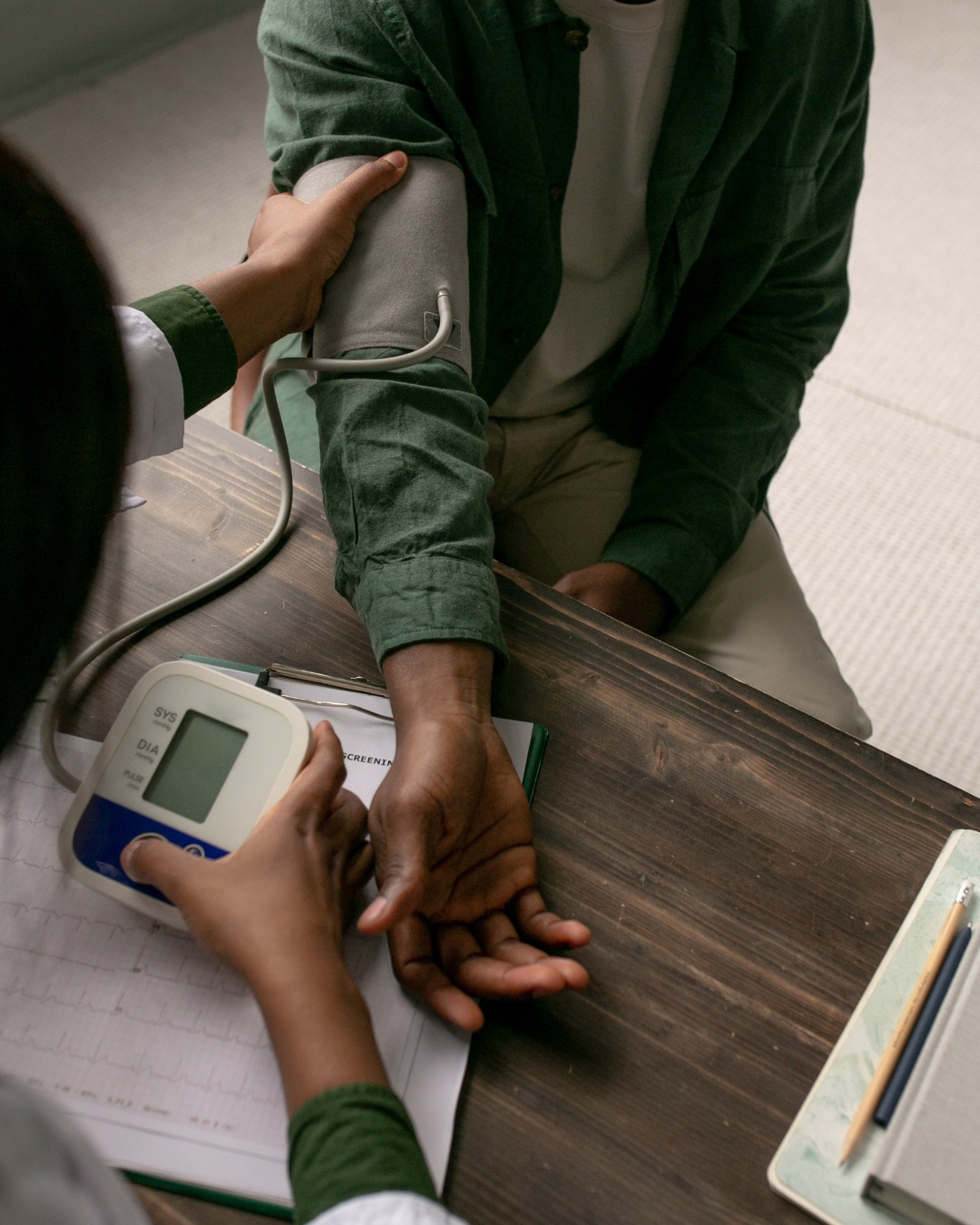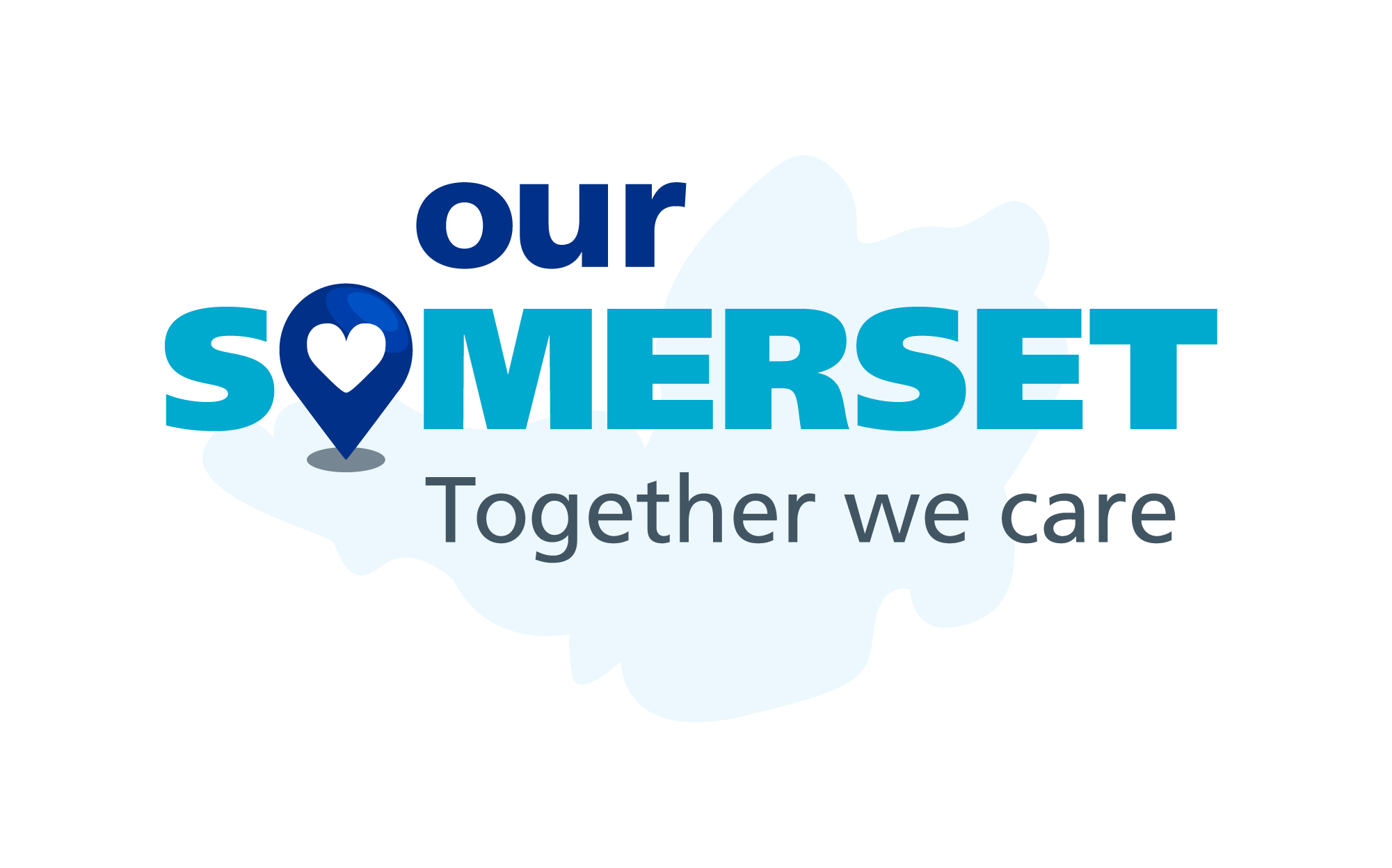Checking your blood pressure
A blood pressure test checks if your blood pressure is healthy, if it's high or if it's low.
All adults over 40 years old are advised to have their blood pressure checked regularly.
You can get your blood pressure tested at a number of places, including:
- at most pharmacies
- at home by borrowing a home testing kit from a Somerset library
- in some workplaces as part of our Workplace Testing Scheme
- at your GP surgery
- as part of your NHS Health Check
- at a Somerset’s Big Conversation event (subject to availability)

Checking your blood pressure takes around one minute.
Rather than having to book in with your GP, you can get your blood pressure tested at a number of other places, including:
- at most pharmacies:
- Your local community pharmacy can offer a free blood pressure check by a healthcare professional without the need to book through your GP. Find your nearest pharmacy on the NHS website: Find a pharmacy - NHS
- as part of your NHS Health Check
- If you’re a healthy adult aged 40-74, and live in England or Wales, you’ll be invited to a free NHS Health Check every 5 years. This health check will include a blood pressure test.
- at a Somerset’s Big Conversation event (subject to availability)
-
- Our Somerset engagement roadshow is coming to your community. We want to speak with as many Somerset residents as possible about the government’s new 10 Year Health Plan, built on three key shifts: Hospital to community, analogue to digital and sickness to prevention.
At many of these community events we will also be offering free blood pressure checks. Find your nearest event at our website: Somerset's Big Conversation 2025 - NHS Somerset ICB
You can also borrow a free blood pressure monitor in libraries across Somerset.
The devices can be borrowed for 2 weeks by any adult library member, so that you can make regular checks at home over this period.
The blood pressure monitor kits include an information leaflet that explains how to check your blood pressure at home and what to do with the results. Measuring blood pressure at home can be very useful to give a more accurate picture of what a person’s blood pressure is like.
Find out more here: Supporting health and wellbeing in libraries
How to measure your blood pressure at home
- Avoid things that can raise your blood pressure in the short term. Don’t measure your blood pressure within half an hour of eating, smoking, drinking caffeinated drinks such as coffee, or exercising. These can all raise your blood pressure temporarily. If you need to use the toilet, go before you measure your blood pressure.
- Wear loose-fitting clothes. Wear a short-sleeved t-shirt or something with sleeves you can push up easily, nothing tight. This is so that you can fit the cuff around your arm.
- Rest for five minutes before you take your reading. Sit down somewhere quiet, ideally at a desk or table. Have your back supported with your arm resting on a firm surface and your feet flat on the floor. Stay in this position while you take your blood pressure.
- Make sure your arm is supported and at the same level as your heart. Position yourself so that your arm is resting on a surface and is at the same height as your heart. Keep your arm and hand relaxed, not tensed.
- Make sure you are relaxed and comfortable. If you are anxious or uncomfortable, your blood pressure will rise temporarily.
- Follow the instructions that came with your monitor. Make sure you place the cuff around your arm as described in the instructions.
- Place the arm cuff just above your elbow. The cuff should be about 2cm above your elbow to make sure it can detect the artery in your arm, just under the skin.
- Keep still and quiet while you take your reading. Moving, chewing, talking and laughing can affect your reading. Make sure you don't cross your legs, as this will raise your reading too.
- Take two or three readings, each about one to two minutes apart. If your first reading is much higher than the next, ignore it and take an extra reading. Once you have two to three readings, you can work out the average.
- Keep a record of your measurements. Record all your readings in the memory of your monitor, on your computer or phone or on paper – whichever you prefer. Write them down exactly as they appear on screen.
- Measure your blood pressure in both arms when you first start. They will give slightly different readings. From then on, use the arm that gave you the higher reading each time.
- Always use the same arm. If possible, use the arm that your doctor or nurse uses when they measure your blood pressure.
- Take readings at the same time each day. For example, first thing in the morning or last thing at night. Your blood pressure can vary throughout the day and with different activities, so this will mean you’re comparing like with like. It’s good to have a routine – like measuring your blood pressure before breakfast.
- Don’t round your measurements up or down. Record your readings as they’re displayed because it could affect the treatment you’re prescribed.
- Don’t worry if you get an unexpected high reading. A one-off high reading is usually nothing to worry about, rest for five minutes and take the reading again. If it’s still high, measure your blood pressure again another day. If it remains high for long, around two or three weeks, see your doctor or nurse.
- Don’t worry about small changes. It’s normal for there to be small changes in your blood pressure.
- Don’t check your blood pressure too often. Some people find that they become worried or stressed about small changes in their readings if they take them too often. Worrying can also raise your blood pressure in the short term, making your reading higher than it should be.
- Don’t stop taking your medications if your blood pressure falls. Always talk to your doctor before stopping your medications, even if your blood pressure has fallen to a healthy level according to your home monitor.
- Speak to your doctor or nurse if you’re worried. If you have doubts or concerns about your readings or home monitoring, speak to your doctor or nurse, or call 111. If you think you may be having a stroke or heart attack call 999 immediately.
Once you've taken a reading, it's important to record your numbers so you can compare results over time and show a health care professional if needed.
You can also record it online through the NHS website.

